Published 03/10/2025
Banjo Kazooie: Nostalgia 64
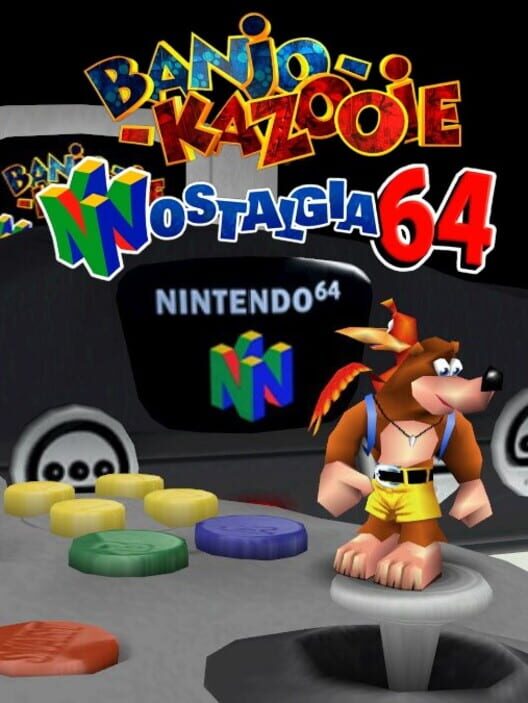
Banjo Kazooie firmly sits atop my personal ranking of Nintendo 64 games, and amongst my favourites of all time. Tooie, as well, is fantastic, but beyond that, nothing has ever scratched the same itch as the Bear and Bird duo’s debut did. Rare and Microsoft certainly don’t seem interested in following up the true-blue collecta-thons from the Nintendo 64, and it’s left to fantastic romhackers like KurkoMods to pick up the slack. Nothing will ever hit the same level as Banjo Kazooie to me, but man, Nostalgia 64, one of the biggest Banjo mods to date, is the closest I’ve ever gotten to that high ever since.
It’s incredibly easy to say that Nostalgia 64 is easily one of the best romhacks I’ve ever played; sure, it comes with caveats such as the lack of polish a game made by a full team would have, as well as some concepts and designs exceeding the creator’s grasp, but the genuine amount of heart, love, and nostalgic care put into this game makes it genuinely one of the most emotional and beautiful experiences I’ve had with a game so far this year.
A Memorable Foundation
Inherently, this is still a Banjo game through and through. Sure, it’s via a setting very different from our resident Bear and Bird’s world (well, mostly - Conker’s Bad Fury Day’s level pretty much feels like a more linear Banjo stage), but you’ll still be collecting Jiggies to progress, notes to open Note doors, Jinjos for their sweet, sweet gold, and Mumbo Tokens for some genuinely side-splitting transformations. There aren’t any real moveset changes or whatnot to find within, but considering you get the full Banjo-Kazooie moveset from the jump, it’s hard to be annoyed about a lack of true innovation (plus, I’m sure modding new moves is hard-to-impossible).
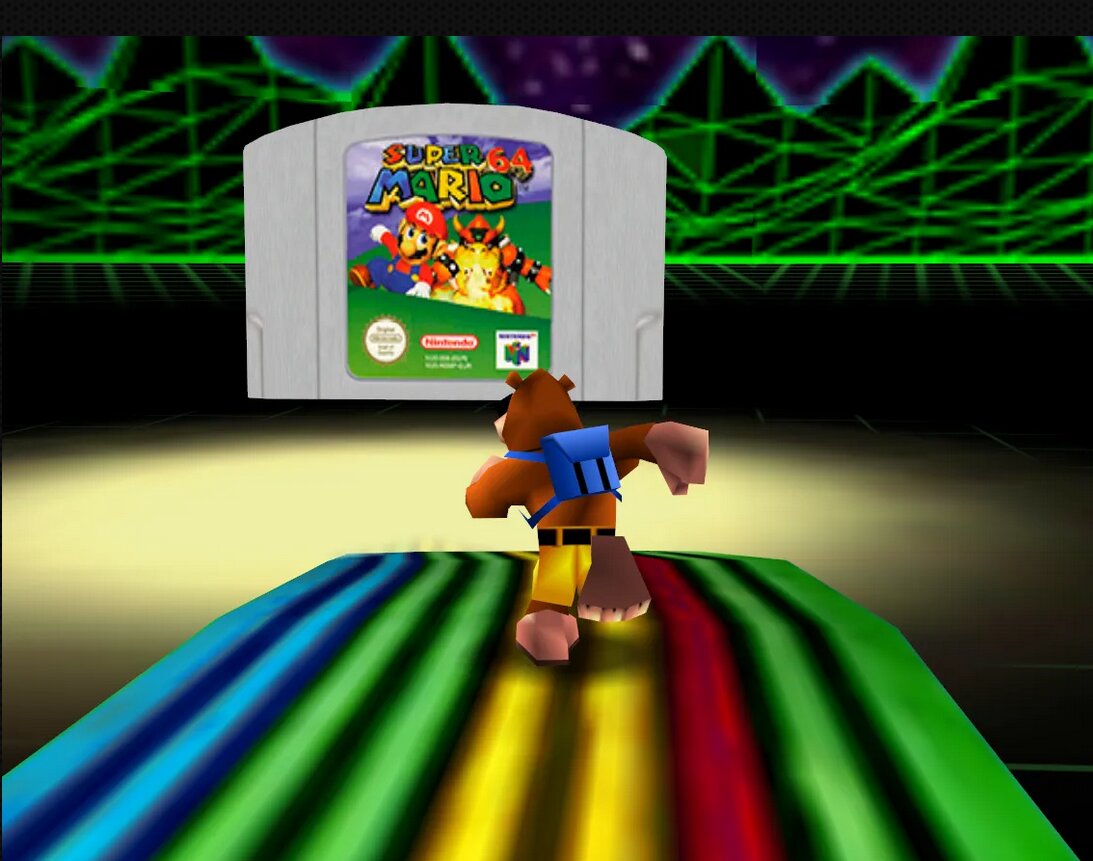
But to surmise, Nostalgia 64’s foundation is the closest I think we’ll ever get to Banjo-Threeie in that core gameplay department. It’s simply just ‘more’ Banjo, with the unique twist we’d never see in an official manner. World complexity feels like a happy medium between that of the small but succinct levels of Banjo-Kazooie and the more populous but somewhat oversized lands of Banjo-Tooie. I never once found myself getting particularly lost, and the usage of feathers, eggs, and notes as guiding paths helped me collect the vast majority of the collectibles without any real issues. Thankfully, we’re not experiencing the terror of reaching the end of Click-Clock Wood or Rusty Bucket Bay with two notes missing - a fate reserved for those in hell.
There are a few further additions to the game that aren’t in Banjo’s vanilla outings; special collectibles hanging about that play into the game’s extensive, fascinating post-game and very decent reasons to return to each of Nostalgia 64’s bevy of worlds. Nostalgia 64’s core very much follows the motto of ‘if it’s not broke, don't fix it’, and whilst there are some issues with that concept, for the most part this is a fairly traditional Banjo game in the moment to moment gameplay, and I couldn’t be happier.
Like other Banjo games, the storyline really is more of a framing device to get you collect-a-thon-ing, and overall is a bit of an afterthought. A surprising afterthought, to be fair, as this time around, Bottles is the main antagonist! Having grown tired of his role as a supporting cast member, Bottles has taken the entirety of the Nintendo 64 ecosystem hostage, threatening them all with… uh, something. Really, I have no idea what Bottles’ plan actually was besides locking up all of the Nintendo 64’s greatest foes, but even the idea that Banjo and Kazooie are the chosen heroes to save the Nintendo 64 over more legendary names like Link or Mario is really sweet to me. The biggest ‘impact’ of Bottle’s actions are essentially easter eggs in each of the levels; some decent exploration will showcase the various villains Bottles has devastated, ranging from King Bomb-omb to the eel in the Lagoon from Super Mario 64, to Wizpig in Diddy Kong Racing. There’s nothing really to do with them, but the mental image of Bottles somehow taking on the bloody Wizpig is just a great gag in itself.
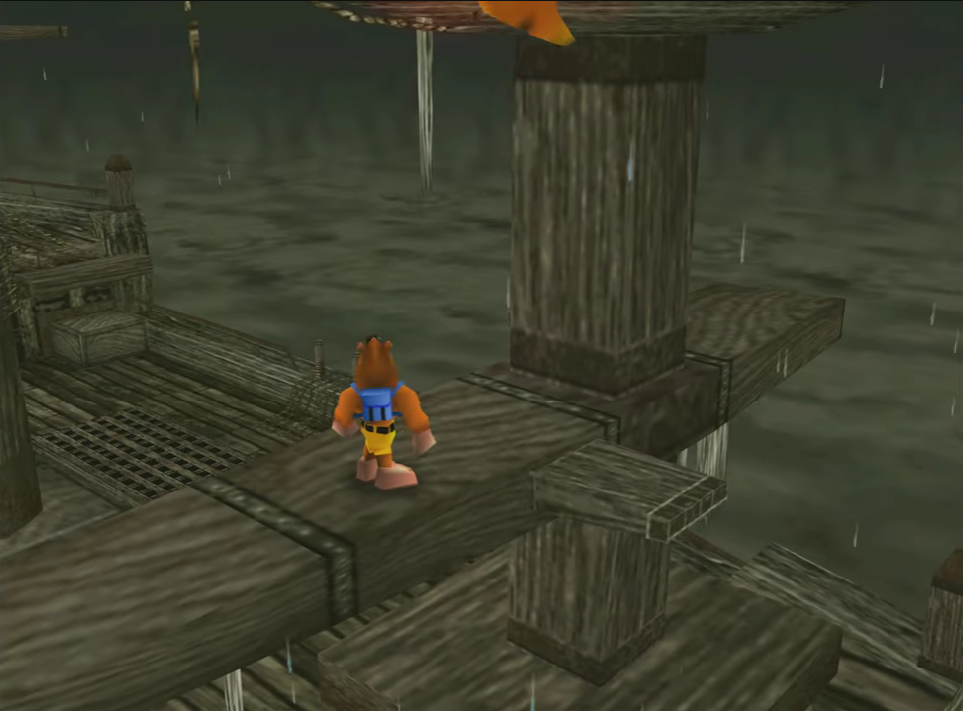
The Most Potent Weapon of All
Following along with the concept of Banjo saving the ecosystem of the Nintendo 64, each of the worlds in the game is a depiction of some of the N64’s most famous, iconic, and beloved titles. And, uh, a few others, I guess. You’ll see. The only real major missing title to explore is The Legend of Zelda, but that is fair enough considering Kurko has already created their own entire romhack based around Ocarina of Time entitled The Jiggies of Time. Otherwise, pretty much all the staples of the system are freely explorable. Now, playing the levels as actual Banjo-Kazooie levels is perfectly fine, but I think the true joy of this game is just… experiencing the worlds Kurko has recreated in the image of Rare’s magnum opus.
The amount of love and detail put into each of the Nostalgia 64 worlds rivals that of the core Banjo-Kazooie games - if you gave this game to someone who knew little about the franchise, until some of the more fourth wall-breaking dialogue pops up, I think you could convince them this is essentially Banjo-Threeie. But I digress, the worlds themselves, regardless of the overall quality, are of a stupendous quality. They’re incredibly robust as new Banjo-Kazooie worlds, but what really set my heart aflutter was the most potent, titular affliction anyone can suffer from; nostalgia.
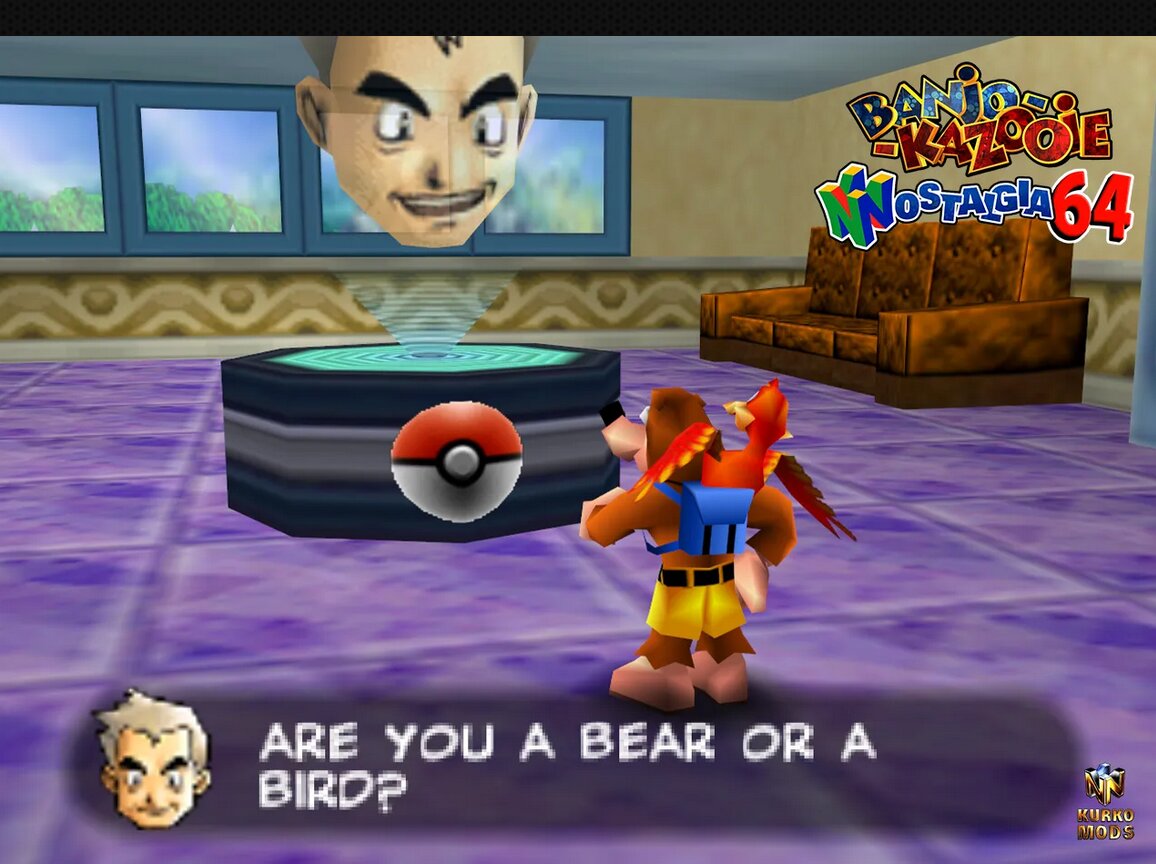
I won’t mince words - being able to physically wander around the locales of Pokemon Snap, experience Bomb-omb Battlefield in a totally new way, and even get to fall back into my old safe space of Yoshi Story for a few moments - each of these moments stirred feelings in my chest and made my eyes prick with wetness at the sheer emotions I was feeling. Super Mario 64 is the first game that was -mine-, and mine alone, and being able to experience in an authentic, but unique way in the framing of my favourite N64 game is beyond words. Plus, the Banjo-fied soundtracks of each of the worlds our bear and bird duo visit really pluck at the heartstrings; I still find myself humming the variant of Professor Oak’s Lab from Pokemon Snap that you hear in this game. It’s so cozy, and warm, and safe, and that’s really something I need in the darker days of my life.
Video games are special to me, and whilst many games these days are bigger and, honestly, better, the era of the Nintendo 64 will always, *always*, be the one that is most important to me. Banjo Kazooie may be my favourite game on that console, and pairing it with a celebration of the console that, honestly, helped mold me into the kind of person I am is something really beautiful.
There are a few levels that don’t quite hit the mark set by the best of which Nostalgia 64 showcases - for an example, the Diddy Kong Racing level just feels a little *too* empty to justify the size, and it’s lack of a race with *that* transformation almost feels like a downright criminal. Easily the weakest - I hesitate to call any outright bad - are the ones that lean more in Banjo-Tooie’s style of level design: way too big, way too spread out, and in rare cases, where the hell is that last note!? I’d also say that I felt a few of the last levels leading up to the final encounter with Bottles - primarily Star Fox 64 and *that* game featuring the accursed glove of nightmares - aren’t quite as fleshed out as the rest of the game and ends the game on a slightly down note. Which, of course, is instantly corrected by the genuinely fantastic postgame Nostalgia 64 has on offer, giving you some damn good incentive to power through and find every last secret scattered throughout this love letter.
Easily the best level, and the one with the most love and affection poured into it, is the Goldeneye 64 stage. Now, even as someone who thinks Goldeneye is JUST good (I didn’t play it as a kid, sue me), the image alone of Banjo running around in a Russian military base is so over-the-top it’s almost not funny. The way it references and replicates the missions Bond had to complete in those opening two missions is commendable, and it’s all tied together with some utterly ridiculous dialogue from the NPCs that had me in stitches. Plus, even if I’m not the biggest fan of Goldeneye, the aesthetics of those early, snowbound levels are nigh on unmatched.
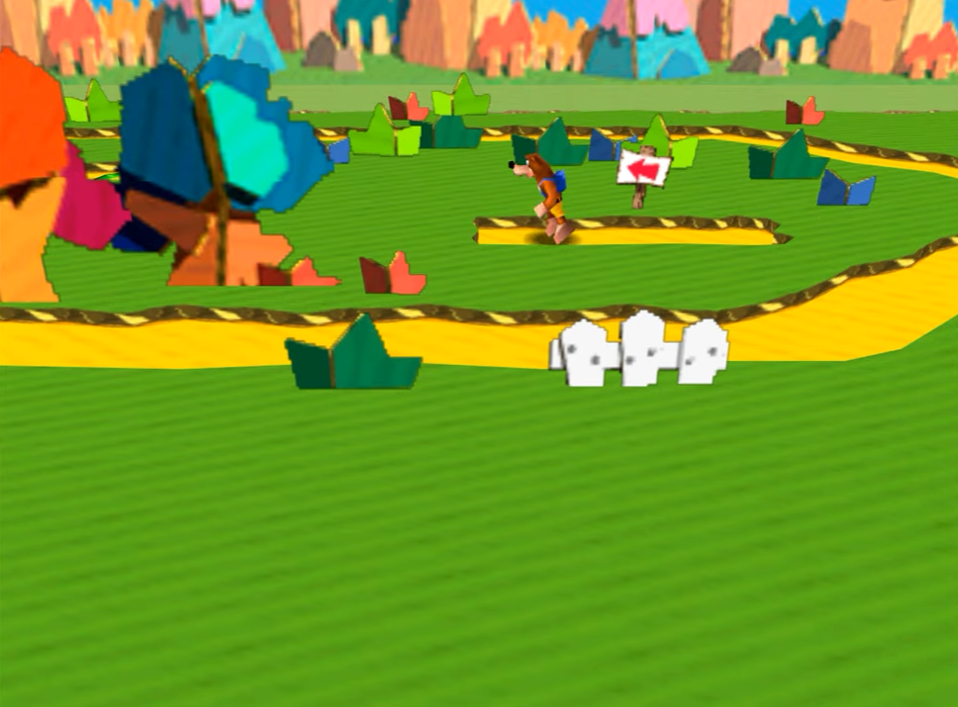
It also features the single funniest gag in the entire game - a trail of golden feathers leading off the platform James Bond iconically dives off at the end of the first level. Where do these golden feathers lead? Well, I shan’t spoil it, but what our romhack author has achieved here equals some of the best and funniest stuff Rare ever delivered. There are a few other worlds towards the end of the game - such as the ‘Beta’ stage and the secret, final stage that requires nigh full completion of the game - that are such incredible inclusions that I really don’t want to spoil them, but the fact Kurko turned them into full stages of their own is brilliant, and that they’re so damn fun to boot is just icing on the cake.
A Celebration of History
The best way I’ve managed to convey to people what Nostalgia 64 feels like is thus: it feels as if Rare made the Nintendo equivalent to Astro Bot, but with Banjo in the starring role, and just with the Nintendo 64 on display rather than Nintendo’s whole history. Which, overall, is one of the highest compliments I can administer to Nostalgia 64. Whilst story has never been the biggest, most important element to any Banjo game, snappy, genuinely hilarious dialogue is perhaps the series most important factor beyond the core platforming. It all feels in character - or, as out of character as Banjo needed them to be - for everyone you find, and the amount of fourth-wall breaks never once felt like too much. The random dialogue that would pop up whilst wandering the game’s hub, like Falco hitting on Kazooie or a new character raving that the Nintendo 64 sold over one trillion consoles (which just gets funnier when Banjo is just like ‘neat!’) feels exactly in line with the ever-so-slightly self-aware back and forth I remember, but it never really strides into the lampshading and meta jokes that go too far.
If there was an element of these stages, and of Nostalgia 64’s design philosophy as a whole, I’d have to criticize, it’s the direct amount of ways you can obtain a Jiggy that have been pretty much copy-pasted wholesale from Banjo-Kazooie. Now, I understand that this is a romhack at the end of the day and that fully creating a game the size - or bigger - of Banjo-Kazooie is a monumental task. I’m not sure if Mark Kurko’s previous projects, specifically Jiggies of Time, had a greater amount of unique mechanics and situations to actually obtain Jiggies, but here in Nostalgia 64, a very decent amount of them are *exactly* the same as Banjo-Kazooie, regardless if they fit the general aesthetics of whatever level you’re in.
Sure, sometimes it makes sense - having the explosive box enemies from Rusty Bucket Bay scattered across BomberMan’s stage makes enough sense to me, but why does the same level have the target challenge and the mummy hand from Gobi’s Valley? I certainly haven’t played BomberMan 64, but the world doesn’t really have an Egyptian feel to it, y’know what I’m saying? This isn’t a massive downside to the game or anything, it just occasionally dislodges me from the beauty of playing some of my favourite childhood games as Banjo, reminding me that I’m ‘just’ playing a Banjo romhack - no insult intended. But other times, they manage to twist elements from Banjo into something resembling what they’re replacing - there was no way to have an actual Bow Wow from Bomb-omb battlefield, but having one of the invincible bulls from Mumbo’s Mountain? Genius.
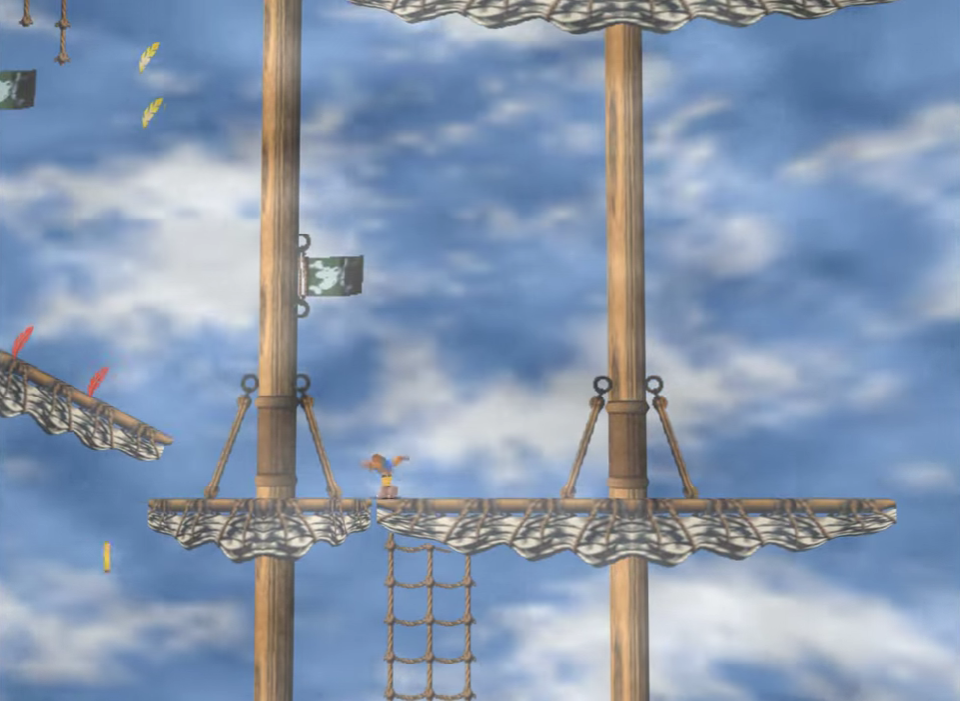
A Slippery Slope
I’d also say many of the attempts to replicate the geometry of the games Nostalgia 64 is paying homage to leads to a lot of very precise platforming on very imprecise landmarks. The amount of times I was trying to jump across small platforms, or on tree branches, or just totally normal landscapes, and Banjo would just kind of ‘slip’ even though he looked as if he was clearly standing on the piece of geometry. It certainly doesn’t tarnish the experience, but it did lead to a few moments of frustrations, especially in a couple of the later worlds. To counteract this, I’m very thankful a couple of worlds that hang above bottomless pits don’t actually kill Banjo upon falling, rather just spawning him back at the last entrance he came from. With Nostalgia 64 still having the thrice-cursed fact of Notes vanishing upon death, frequently having this as a safeguard made my life a lot easier.
These platforming issues provide a double edged sword in regards to one of Nostalgia 64’s most stunning, surprising, and genuinely unbelievable features; pretty much every level in the game - sometimes upon just finding a hidden alcove, or sometimes just on the ‘main path’ to an easy-accessable Jiggy - will feature a transition to a world very different to the 3D landscapes that the Nintendo 64 dawned upon the world. An early example is in one of the Super Mario 64 levels, where going down a pipe will lead you to a recreation of 1-2 from the OG Super Mario Bros, totally replicating (to the best of their ability) the side-scrolling gameplay of the icon almost seamlessly. Through some amazing trickery involving camera placement and invisible walls, Kurko genuinely even for only a few minutes at time, turns Banjo-Kazooie into a bonafide 2D, sidescrolling platformer. Hell, the Yoshi Story level, accessible from the start of the game, is entirely a replication of that game’s 2.5D platforming, with a genuinely incredible amount of work put in to keep the route-based platforming that set Yoshi Story apart for its time. Still the best Yoshi game ever.
But anyway, as I was saying, these 2D stages are genuinely amazing from a technical level and are honestly beautiful to experience, but it’s very, very clear Banjo was never designed to be a 2D platformer in the remotest sense of the word, and it was these stages that I felt the most stifled in regards to the actual platforming. I was constantly slipping from geometry, suffering from camera issues that attempted to recreate the ‘screen-by-screen’ scrolling of the era, and I was constantly beset by a lack of depth perception. Still, I’ve never seen something like this attempted in a romhack, and one of these issues held me up long enough to dissuade me from how incredible these recreations look every single time.
There are a lot of rough edges to Nostalgia 64, none of which are the fault of Kurko, but for every scuffed jump, every recycled mechanic or strange decision, none of them really mattered because Nostalgia 64 may be the most heartfelt, beautiful love letter to the era of gaming that means the most to me that I’ve ever seen. No one who doesn’t adore the original Banjo duology should miss out on Nostalgia 64, which stands not only as potentially as one of the best romhacks I’ve ever played - for what it’s worth, it manages to stand as one of the best games to ever feature my favourite duo in all of gaming.
